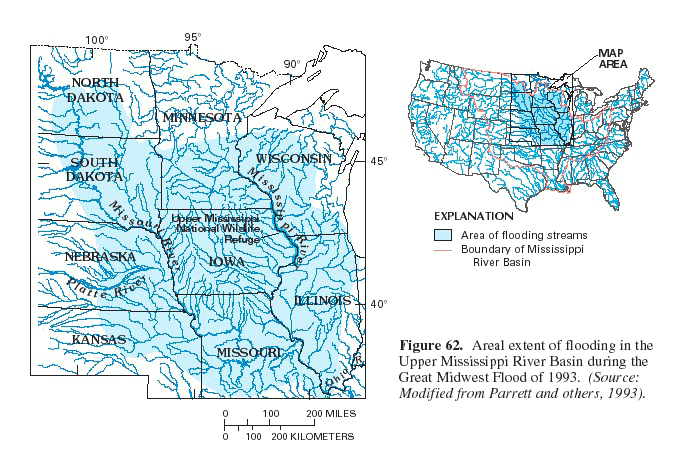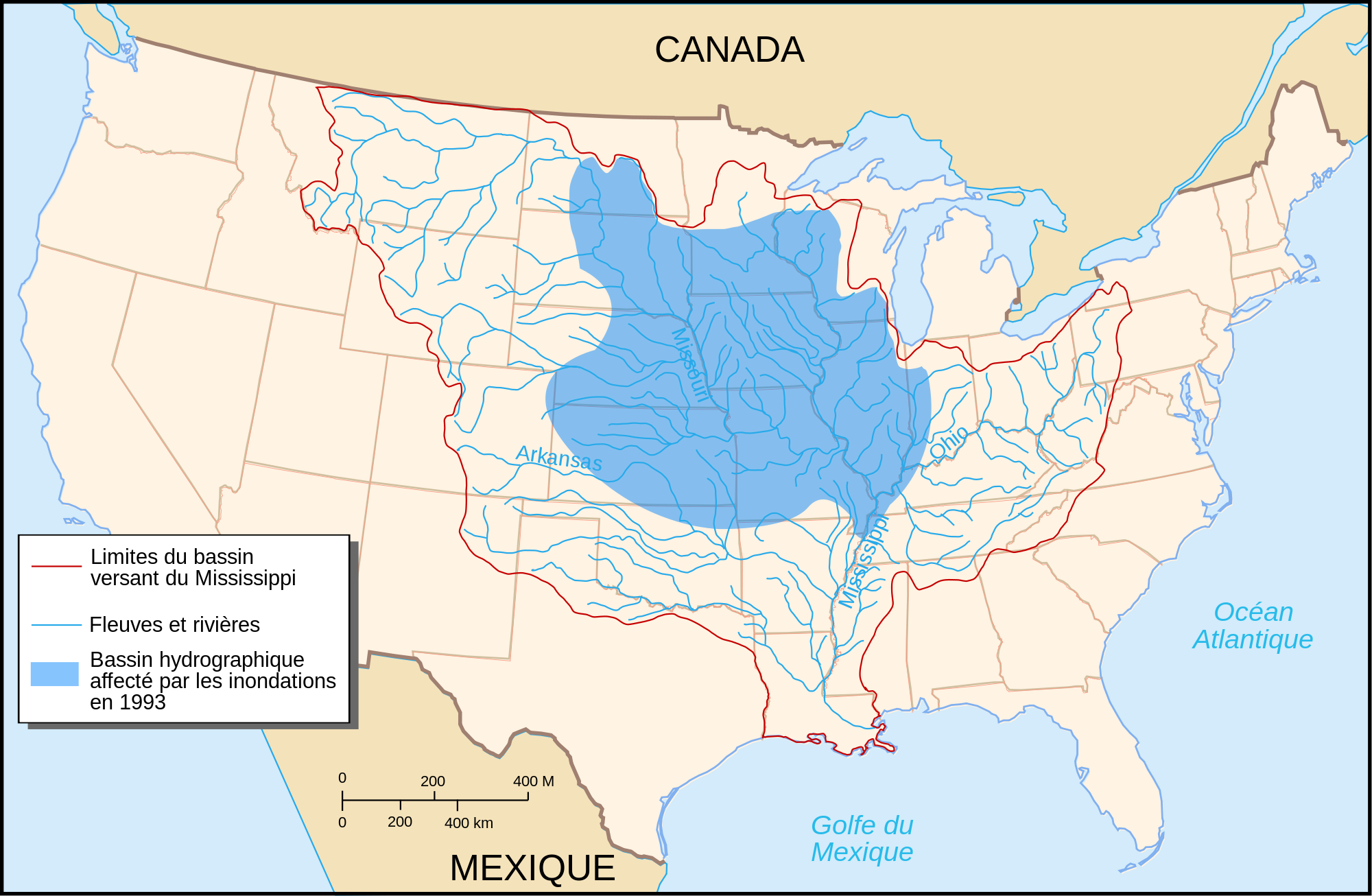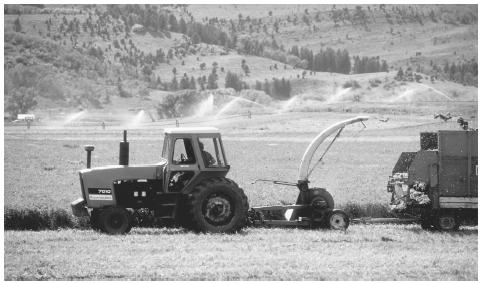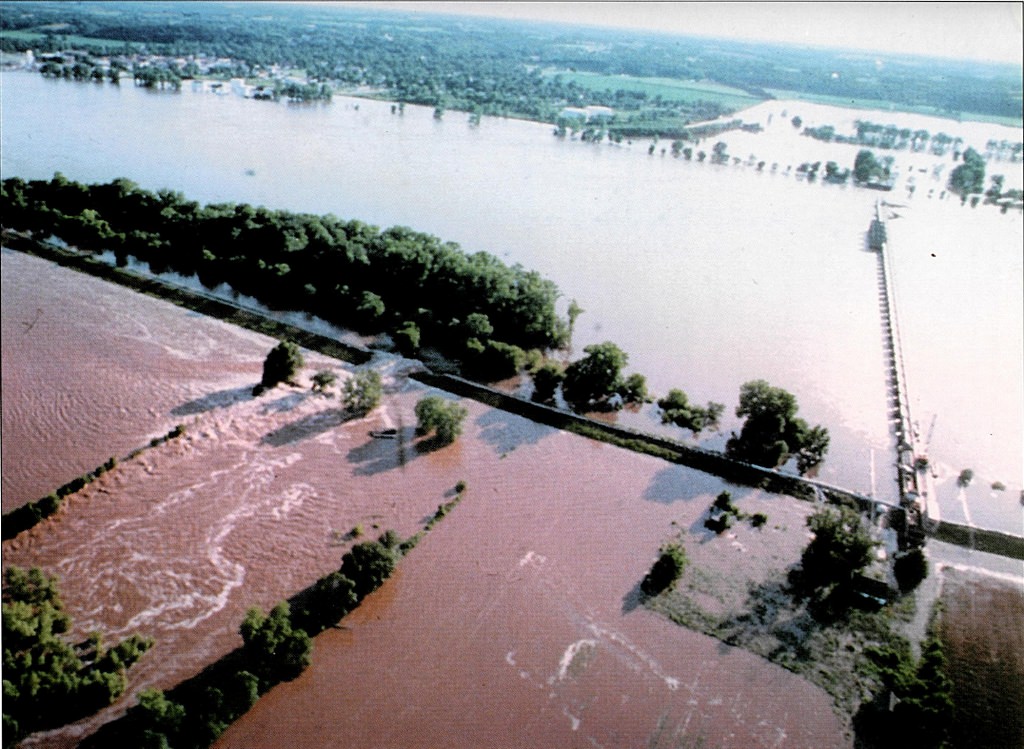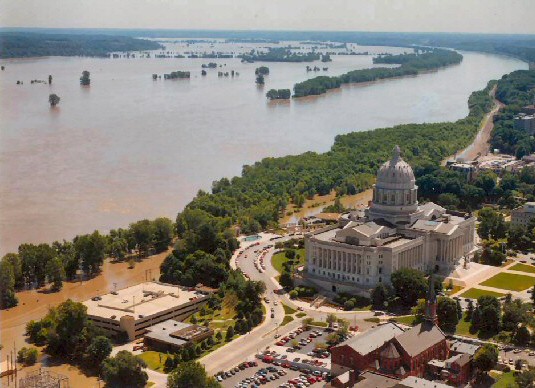[ Hazard ]
Event Date
April – October, 1993
Type
River Flood: Mississippi and Missouri Rivers
Notable Features
• Conditions prior to the event:
- Significant rainfall during June and July
- Wet soil conditions in the Upper Midwest prior to the event
• 150 major rivers and tributaries were affected.
• Floods covered an area of 400,000 square miles within 9 states.
Source(s)
• EM-DAT
• NOAA
 Gallery
Gallery 
[ Hazard ]
Event Date
August, 2011 – January, 2012
Type
River Flood: Mekong River
Notable Features
• Conditions prior to the event:
- Persisting monsoonal rains
- Active presence of La Niña phase of ENSO
- Remnants of tropical cyclones
• 65 of 77 provinces faced floods.
Source(s)
• EM-DAT
• NOAA
• 2011 Thailand Floods Event Recap Report, AON Benfield
 Gallery
Gallery 
[ Exposures ]
Principal Area of Impact
Midwest United States
Population Prior to the Event
34.741 Million Estimated (Iowa, Wisconsin, Minnesota, North Dakota, South Dakota, Nebraska, Kansas, Missouri and Illinois States, 1992)
Previous Year’s Gross Domestic Product (GDP)
6.539 Trillion USD (1992)
Previous Year’s Gross Domestic Product Per Capita
25,492.96 USD (1992)
Source(s)
• 1990-2000 State and County Intercensal Estimates, United States Census Bureau
• World Bank Group
 Gallery
Gallery 
[ Exposures ]
Principal Area of Impact
Central / Northern Thailand
Population Prior to the Event
57.11 Million Estimated (Bangkok, Central, Northern, Northeastern Regions, 2010)
Previous Year’s Gross Domestic Product (GDP)
318.9 Billion USD (2010)
Previous Year’s Gross Domestic Product Per Capita
4,802.66 USD (2010)
Source(s)
• 2010 Population and Housing Census Executive Summary, National Statistical Office of Thailand
• World Bank Group
 Gallery
Gallery 
[ Vulnerabilities ]
Governance
World Bank Group Indicator –
Regulatory Quality (Percentile Rank):
Not Available
World Bank Group Indicator -Government Effectiveness (Percentile Rank):
Not Available
World Bank Group Indicator –
Rule of Law (Percentile Rank):
Not Available
World Bank Group Indicator – Voice and Accountability (Percentile Rank):
Not Available
World Bank Group Indicator – Political Stability and Absence of Violence (Percentile Rank):
Not Available
Corruption
World Bank Group Indicator – Control of Corruption (Percentile Rank):
Not Available
Transparency International Corruption Perception Index Score:
Not Available
Transparency International Corruption Perception Index Rank:
Not Available
Development
World Bank Group - GINI Index:
38.4 (1991)
Previous Year’s Human Development Index Score (HDI):
0.976 (1990)
Previous Year’s Human Development Index Rank (HDI):
7 out of 160 (1990)
Source(s)
• World Bank Group
• Transparency International
• UNDP Human Development Report 1991
 Gallery
Gallery 
[ Vulnerabilities ]
Governance
World Bank Group Indicator –
Regulatory Quality (Percentile Rank):
56.5 (2010)
World Bank Group Indicator -Government Effectiveness (Percentile Rank):
62.2 (2010)
World Bank Group Indicator –
Rule of Law (Percentile Rank):
49.3 (2010)
World Bank Group Indicator – Voice and Accountability (Percentile Rank):
32.2 (2010)
World Bank Group Indicator – Political Stability and Absence of Violence (Percentile Rank):
9.4 (2010)
Corruption
World Bank Group Indicator – Control of Corruption (Percentile Rank):
48.1 (2010)
Transparency International Corruption Perception Index Score:
7.1 (2010)
Transparency International Corruption Perception Index Rank:
22 out of 178 (2010)
Development
World Bank Group - GINI Index:
39.8 (2010)
Previous Year’s Human Development Index Score (HDI):
0.654 (2010)
Previous Year’s Human Development Index Rank (HDI):
92 out of 169 (2010)
Source(s)
• World Bank Group
• Transparency International
• UNDP Human Development Report 2010
 Gallery
Gallery 
DR
CatR
[Risk]
